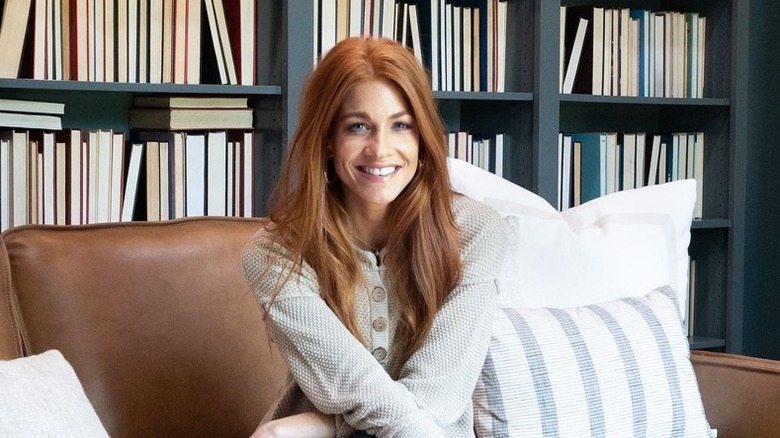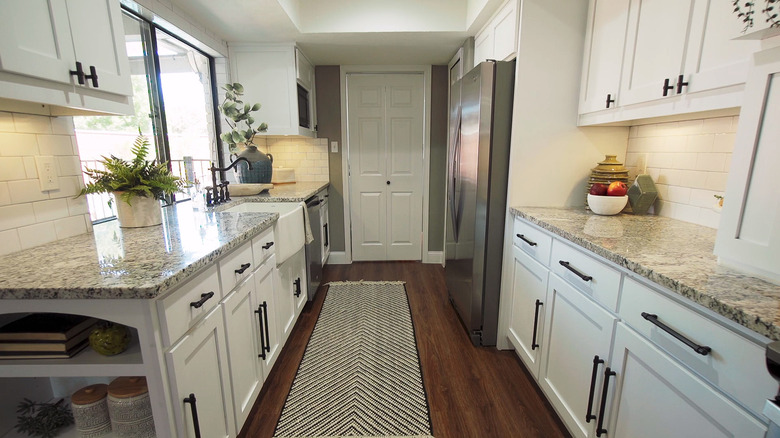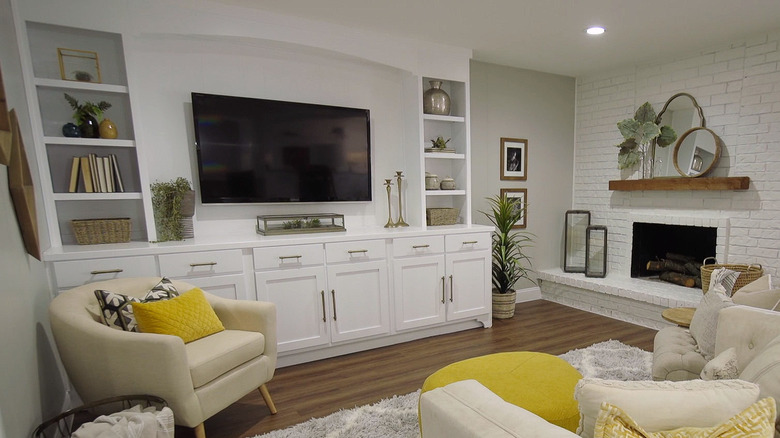HGTV's Jenn Todryk Wouldn't Dream Of Starting A Renovation Without Doing This
Speaking to her husband, Jenn Todryk summed up the first house she would renovate for HGTV's "No Demo Reno" in one word: "rough." The homeowners had been attempting to make some changes to the brick bungalow on their own for about six years, but life and a couple of children forced them to keep their plans ... malleable, let's say. But even with the opinion that the house was rough and the knowledge that the couple, Erin and Jason, was trying to change it, Todryk wasn't bringing a bunch of preconceived notions to the first visit. "The first thing I like to do when I enter a home is do what I call an 'eyeball inventory,'" Todryk said in the episode. "It gives me a great sense of the people's style and taste before I even get to talking to them."
But Todryk doesn't simply inventory the items in a room during the initial walkthrough; she tries to understand them. Who is the item or feature for? What is its purpose, and does it meet that goal? Would something else be preferred? How do other members of the household feel about it? And she comes armed with prompts like "Name some things that you like about this space." It's an important strategy for redesigning a home on a budget and without any changes that require demolition. You keep what works.
What to keep ... and for whom
The inventory process flushes out obvious things, like the tripping hazard created by a change in floor level. The kitchen countertops — several thousand dollars' worth of granite in good condition — were kept even though countertops are a feature Todryk recommends splurging on. "I'm also making a list of things I want to reuse within the home," Todryk said since the eyeball inventory reveals information about who is invested in various elements. It can also let Todryk know when it's okay to jettison something that she'd prefer not to keep, like the massive king-size bed in the homeowners' bedroom. In this way, the eyeball inventory is an opportunity to begin bringing divergent opinions together.
In fact, one of the primary benefits of the eyeball inventory and walkthrough with clients is to uncover who is the "emotional owner" of a particular space. It revealed that a living room Todryk took to be Erin's "mommy cave" was meant to be that but ended up mostly serving as their son's play space. Todryk reconfigured the space to be decidedly Erin's, including the addition of toy storage behind cabinet doors. "He can dirty this room up all he wants," Todryk said, "because you're right next to the kitchen; it's a great place for him to be, right? But at the end of the night, you can have Jason pick up all the toys, put them back where they go ... and then you've got your mom space back."
Other benefits of the eyeball inventory
There were many other examples of the value of an up-front inventory, even for a two-and-a-half-week quickie reno. Todryk prompted the couple about the kitchen with the question about what they like, and when Erin had no reply, she offered that the natural light was important to the galley kitchen and well worth preserving. It's a masterful move that clears the cobwebs that can form after years of disliking a space. It educates the client and prepares them for things that shouldn't, and often can't, be changed, like the load-bearing wall by the kitchen that instead of being removed was transformed into a sort of pass-through bar.
Conversely, not doing the eyeball inventory can lead to missed opportunities, like the opportunity to remove an interior window that Erin didn't want in order to make way for built-ins made from repurposed kitchen cabinets. However, this one keeper isn't necessarily a function of the eyeball inventory; cabinets are one big-ticket element the HGTV star always tries to repurpose or sell.
It's not all about managing the clients, of course. The answers to Todryk's apparently casual queries inform suggestions and decisions about how to improve the spaces. In a way, the eyeball inventory does some of the work in an afternoon that interior designers can spend weeks on, working through mood boards, identifying design springboards, and doing space planning. And it happens to get rid of a few tripping hazards along the way.


